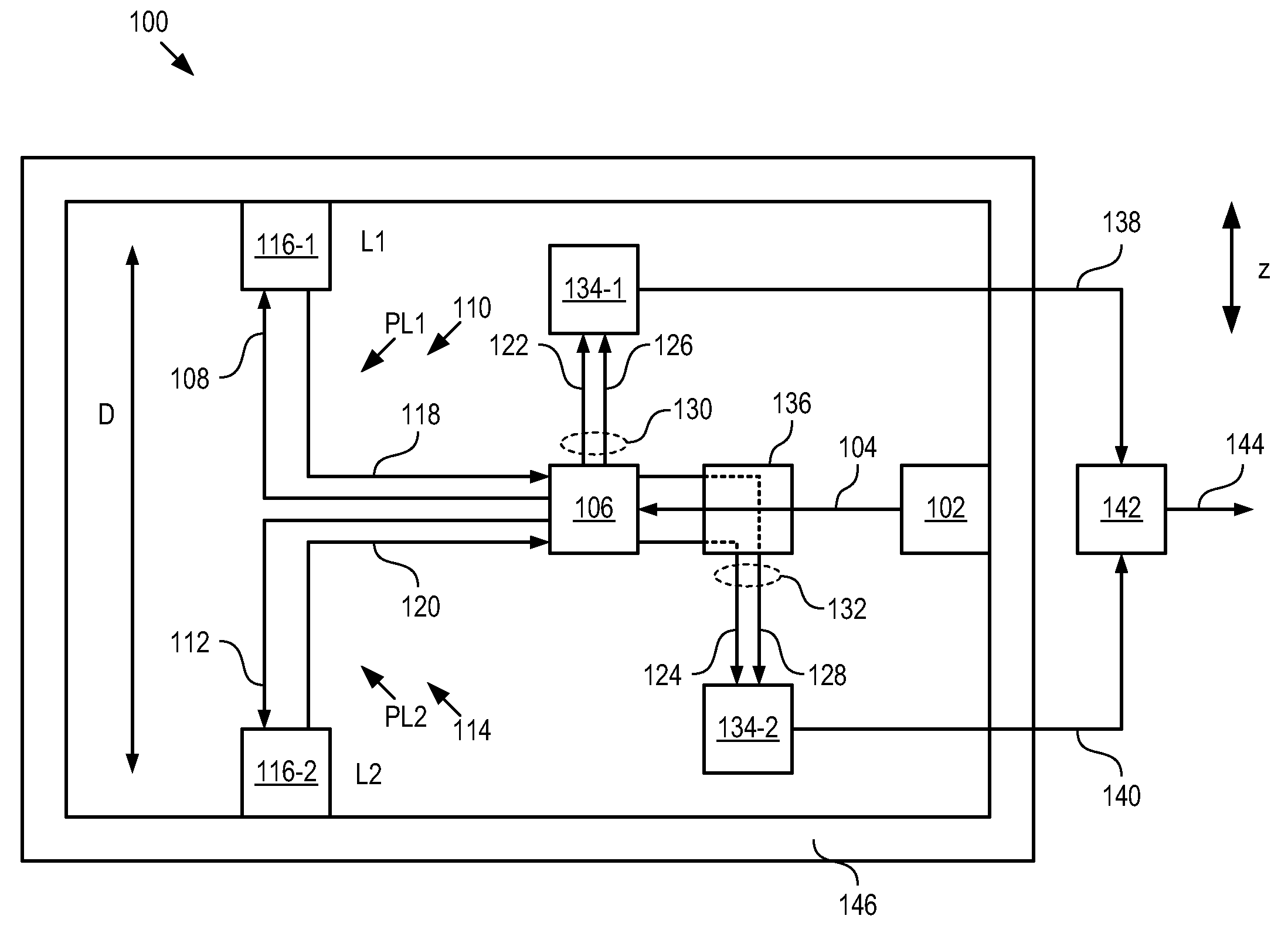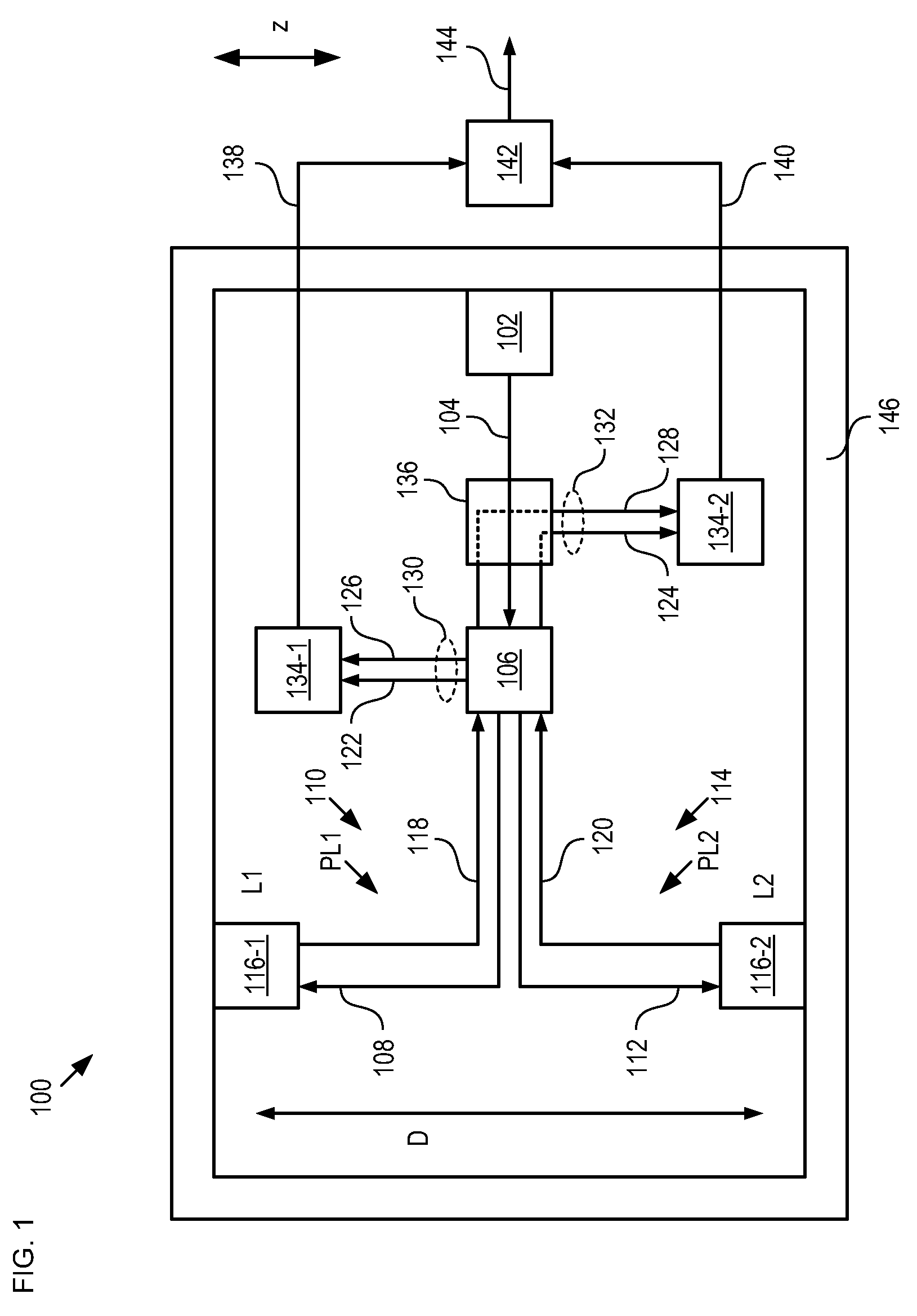Gravity Gradient Sensor
a gravity gradient and sensor technology, applied in the field of gravity gradient sensors, can solve the problems of partial isolation, complex and expensive isolation infrastructure, and easy exposure to extraneous vibrations, and achieve the effect of less susceptible to noise and less sensitive to nois
- Summary
- Abstract
- Description
- Claims
- Application Information
AI Technical Summary
Benefits of technology
Problems solved by technology
Method used
Image
Examples
Embodiment Construction
[0027]FIG. 1 depicts a schematic diagram of details of a differential gravimeter in accordance with an illustrative embodiment of the present invention. Gravimeter 100 comprises source 102, beam splitter 106, sensors 116-1 and 116-2, photodetectors 134 and 138, processor 142, and frame 146.
[0028]Gravimeter 100 provides an output signal based on a difference in a first gravitational field at location L1 that is aligned with the z-direction and a second gravitational field at location L2 that is aligned with the z-direction. For the purposes of this specification, including the appended claims, the axes and / or directions are “aligned” if they are collinear, or if they are non-collinear but are substantially parallel.
[0029]FIG. 2 depicts a method for sensing a gravity gradient between two locations in accordance with the illustrative embodiment of the present invention. Method 200 is described with continuing reference to FIG. 1.
[0030]FIG. 3 depicts a schematic drawing depicting detail...
PUM
 Login to View More
Login to View More Abstract
Description
Claims
Application Information
 Login to View More
Login to View More - R&D
- Intellectual Property
- Life Sciences
- Materials
- Tech Scout
- Unparalleled Data Quality
- Higher Quality Content
- 60% Fewer Hallucinations
Browse by: Latest US Patents, China's latest patents, Technical Efficacy Thesaurus, Application Domain, Technology Topic, Popular Technical Reports.
© 2025 PatSnap. All rights reserved.Legal|Privacy policy|Modern Slavery Act Transparency Statement|Sitemap|About US| Contact US: help@patsnap.com



